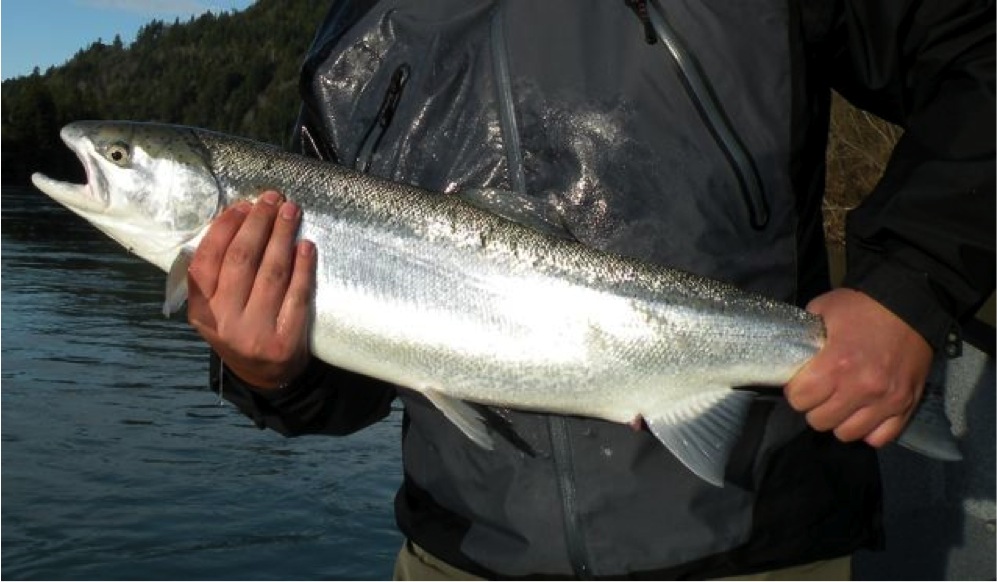In the midst of drought and restrictions on water deliveries to agriculture, a regional newspaper touted that in agriculture earned $4 billion last year in Stanislaus County. A large percentage of that income comes from the production of almonds, walnuts, grapes, and other heavily–watered crops along with irrigated pasture for dairies and livestock. Water diverted out of the Tuolumne River and Stanislaus River ends up being pivotal to that agricultural bonanza.
Yet diverting water out of those two rivers comes at a price to the environment. In particular, the dams that hold back water for summer use also block salmon and steelhead from swimming upstream to spawn. Diversion of as much as 95% of the water out of a river for human use means that the 5% that flows downstream in summer is often a minimal flow, with far warmer temperatures that can be lethal for juvenile salmon. Besides dams and diversions, other major threats to migrating fish include pesticide contamination and the presence of introduced non-native “sport fish” that prey aggressively on salmon fry or smolts headed down the river to the ocean.
 For many decades, the LaGrange dam on the Tuolumne River and the associated Don Pedro dam further upstream have blocked upstream passage for salmon and steelhead. The numbers of surviving fish returning from the ocean varies from year to year, but both species are at only a tiny fraction of their historic numbers in the Tuolumne River system.
For many decades, the LaGrange dam on the Tuolumne River and the associated Don Pedro dam further upstream have blocked upstream passage for salmon and steelhead. The numbers of surviving fish returning from the ocean varies from year to year, but both species are at only a tiny fraction of their historic numbers in the Tuolumne River system.
Environmental and fish-advocacy groups have raised the question of whether the Turlock Irrigation District and Modesto Irrigation District might fund and manage a science-based program to move salmon and steelhead past the two dams to allow migrating fish to spawn in the Upper Tuolumne River above Don Pedro Reservoir. Historic accounts indicate salmon were present in the Upper Tuolumne River, perhaps as high as Preston Falls, and also in the lower Clavey River. Could reintroducing salmon into these clean, cold upper river areas boost their recovery?
Adult fish would need to be captured as they swim upstream to the LaGrange Dam, then trucked or otherwise conveyed to the river above Don Pedro Reservoir. Juvenile fish would be captured as they swim downstream, and then trucked below the dams to be released back into the river. Similar fish passage projects are taking place on a number of Northwest rivers, but it is too early to know whether fish passage is feasible for the Tuolumne River.

